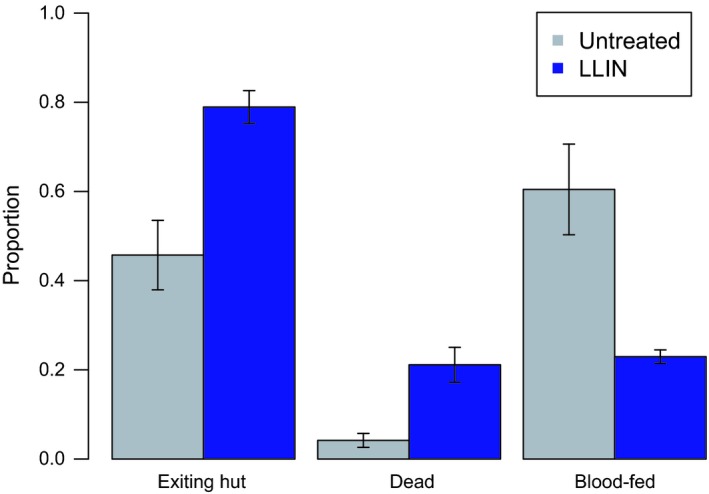Figure 6.

Experimental hut trial in an area with resistant An. gambiae outside of Bouake, Côte d'Ivoire. Experimental huts were outfitted with an artificially damaged untreated net or long‐lasting insecticidal bed net (LLIN) (PermaNet 2.0). On five consecutive mornings, mosquitoes were collected and their location and blood feeding status recorded. Mortality was recorded 24 hr later. Bars represent mean values ± SEM for the proportion of mosquitoes collected attempting to exit the hut, dead within the hut, and/or with a blood meal. Proportions do not total to one, as the categories are not mutually exclusive. Females that entered a hut with an LLIN were more likely to be found in the veranda of the hut (i.e., exiting the hut) than inside the hut. They were also more likely to be killed, but less likely to take a blood meal (p < .05). Gray bars show results for an untreated net, and the blue bars show results for the LLIN
